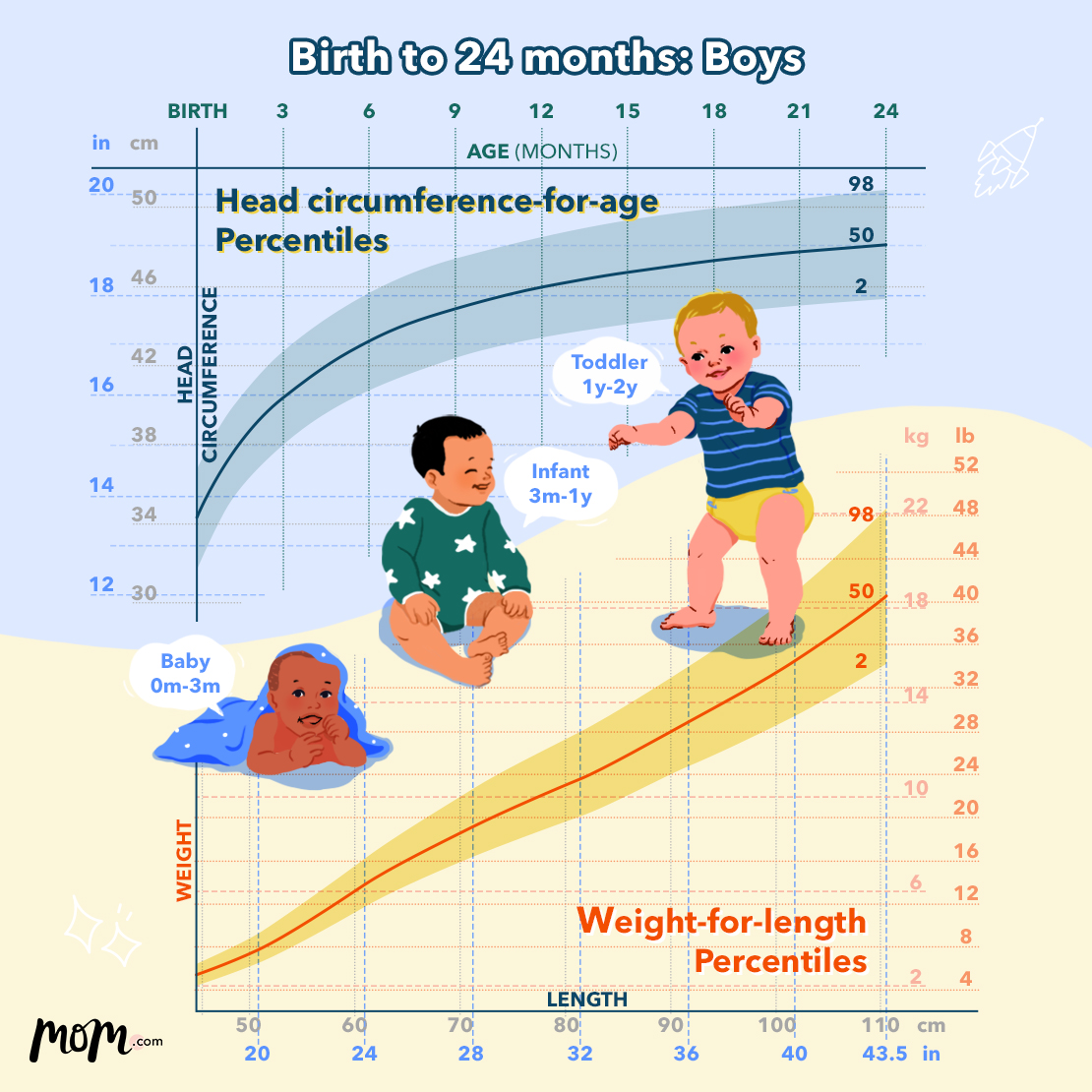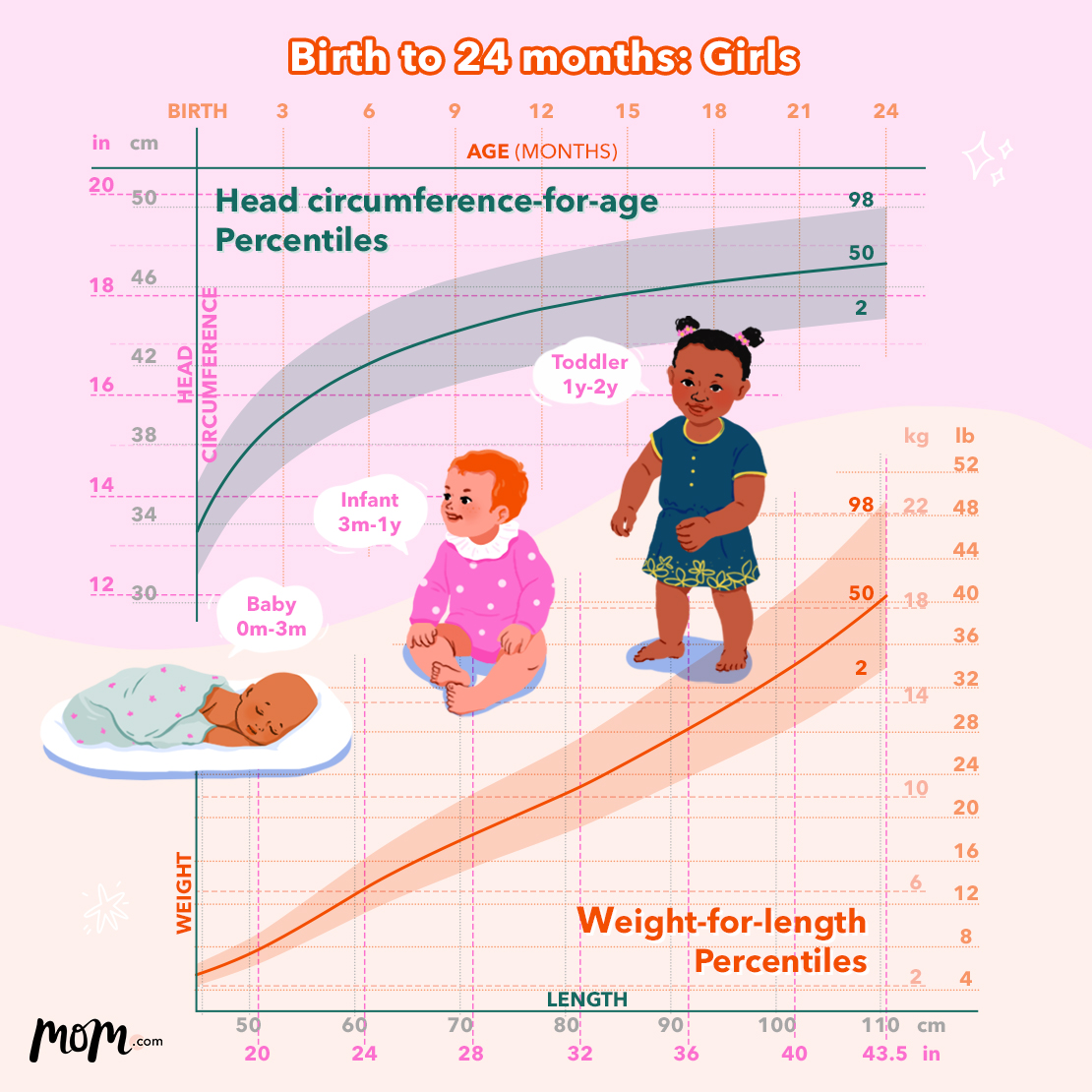
In this article
The first few weeks and months after having a baby brings up a range of feelings and emotions. From exhaustion and elation to contentment and worry, post-partum ups and downs are common. In the time period known as the 4th trimester, the three months after delivery are full of changes, transitions, and uncertainty. It is an adjustment period for both mom and baby.
Knowing what to expect of your baby during these first few months can help make the transition easier. Learn more about what to expect during the 4th trimester and what to look out for with this breakdown of your newborn’s growth milestones.
Your newborn's growth: What to expect during the 4th trimester

Here are some growth milestones to look out for during your baby’s first three months:
Your baby’s first four to six weeks
In your baby’s first month, your child’s’ pediatrician will be closely monitoring your baby’s growth. What they’re looking at are your newborn’s height, weight, and head circumference. During your baby’s first week they may lose up to ten pounds. Your newborn will likely gain that weight back and then some by the time they are 12-weeks old. During the first month, most babies gain one ounce per day and grow between 1 to 1.5 inches.
Your baby’s six-week growth spurt
Many amazing things are happening at this point in your newborn’s life. They may start to reach many of those milestones for babies that you’ve heard so much about. They’ll experience longer periods of alertness and engage more with the sights and sounds around them. These periods of alertness may have your infant becoming overstimulated. which can also lead to increased fussiness. During this time, your baby may also have a quick growth spurt so be prepared for longer and more frequent feedings.
What to expect at 12-weeks
At 3-months old, you can expect your baby to have grown about three inches since birth and gained around three pounds. Twelve weeks is also time for another growth spurt as your little one starts to fill out and begin reaching even more baby milestones. Tummy time is also very important as they continue to grow, build tone, and have more control over their movement.
Soothing baby during the 4th trimester
With your baby’s growth milestones and all of the changes they’re going through, they may also begin to need more comforting. In his book, The Happiest Baby on the Block, Harvey Karp, M.D., mentions the five S’s method for soothing a newborn in the 4th trimester.
- Swaddling to recreate the womb experience,
- Side positioning to aid digestion
- Shushing sounds or white noise machine
- Swinging or rocking movements to soothe
- Sucking at breast, bottle, finger, or pacifier to trigger the calming reflex
The 5 S’s are like the ingredients for making a cake. It doesn’t help you to just have the ingredients. You need the whole recipe in order to do it right,” he said. “Not all babies are going to need all five of the techniques. Some will be happy with just one, others will need two or three done in an order they prefer. Some will need all five. The key is to see what works for your individual baby,” the assistant professor of pediatrics at UCLA wrote.
Why you should keep track of your baby's growth

According to the Center for Disease Control and Prevention (CDC), the standardized height and weight growth charts have been used by health care providers for over 40 years. They are designed to provide a baseline with which doctors and nurses can gauge children’s growth. Health care providers use the World Health Organization (WHO) growth charts for newborns through age two while CDC growth charts are used for ages 2 and up. The WHO growth charts represent the average height, weight, and head circumference of average children of similar age.
Keeping track of your baby’s growth milestones allows both you and your child’s doctor to set a baseline around your baby’s health. Weight loss and weight gain are good indicators of whether your child is receiving proper nutrition. In this way, tracking and monitoring growth allow your pediatrician to address any potential developmental delays or illnesses before they can progress.
WHO growth charts for newborns

Understanding height and weight percentiles: These numbers simply tell you where, out of 100 children your child’s age, your baby falls. If your newborn weighs in at the 50th percentile, this simply means there are 50 infants who weigh more than your child and 50 who weigh less.




Don’t get too caught up your newborns growth chart numbers
New mom Danielle P. would stress herself out with worry over her daughter’s growth chart results each month. “She’s always been on the smaller side so every time the doctor handed me that little card, I felt like I was doing something wrong,” she told Mom.com. “It wasn’t until recently that I learned that she was being compared to babies her age who are breastfed. I always formula-fed her and didn’t realize there was a difference in expected weight.”
All babies grow and gain weight differently so it’s important not to get caught up on the numbers. If you have concerns about where your newborn falls on the growth chart, especially during the 4th trimester, consult your pediatrician. If all is well, however, you don’t necessarily have to wait for your baby’s next well visit. Try this handy growth percentile calculator between office visits to see how your newborn measures up.







